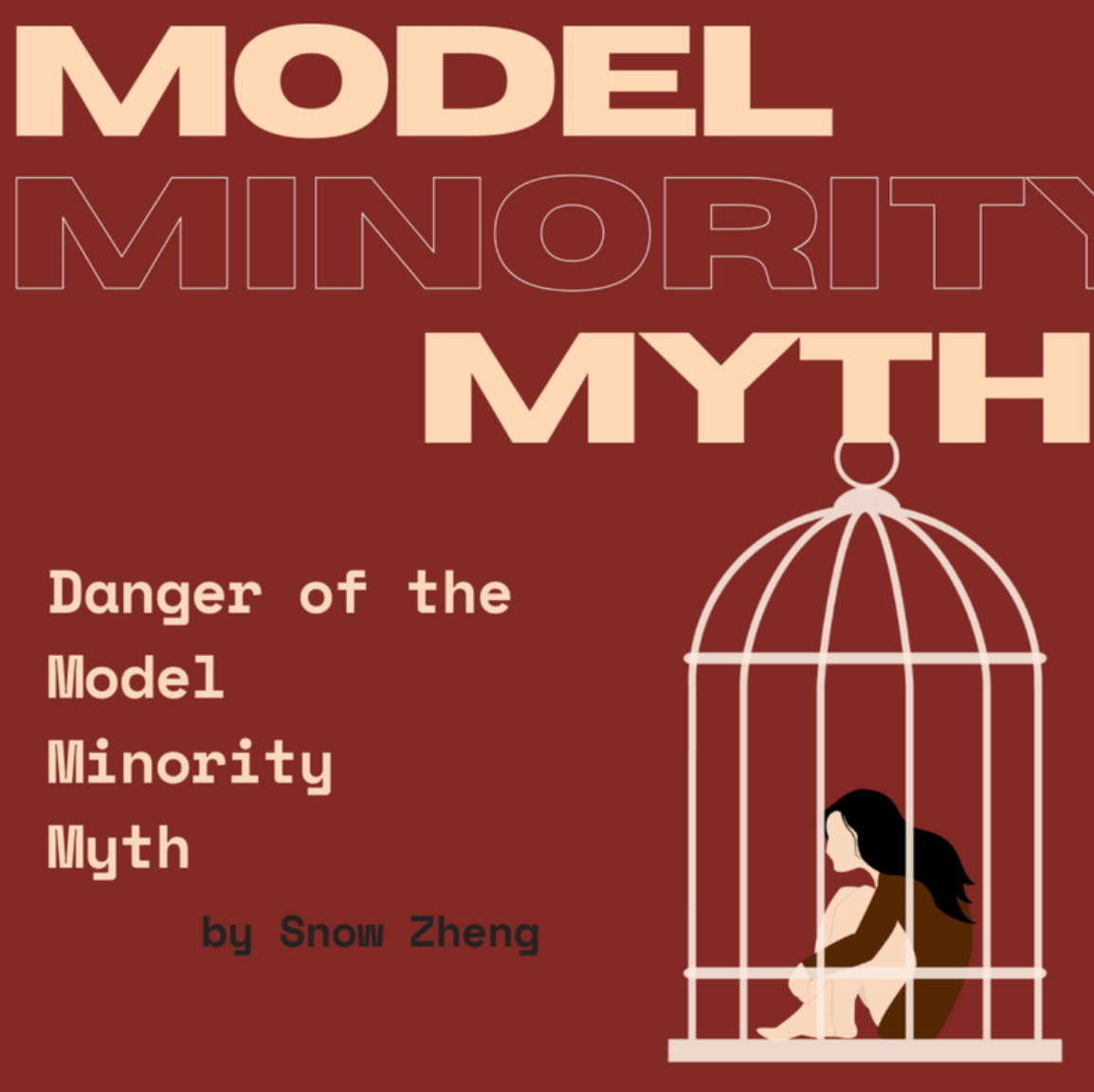Hard-working employees, law-abiding citizens, straight-A students. These labels have been plaguing the APIDA community since the end of World War II, when this community’s perceived universal prosperity was used to suppress other minority groups, especially Black Americans. The model minority concept delivers a disturbing message to minority groups in the U.S. as it attempts to convince other minorities to adopt characteristics commonly attributed to Asian Americans such as strong family values, emphasis on education, and respect for law and order. This message further implies that if other minority groups fail, their under-resourced situations result from not working hard enough or not following the rules, instead of from the perpetual discrimination that disproportionally disadvantages minority groups in American society.
The concept of the model minority is an instrument to minimize the role of racism and other social injustices that are behind many minority groups’ struggles. It is dangerous and detrimental for Asian Americans as well as other minorities. First of all, many of the stereotypes of Asian Americans are simply wrong. Secondly, this myth flagrantly ignores the Asian American community’s diversity. Thirdly, the model minority myth seeks to condition, if not threaten, Asian Americans to live in accordance with stereotypes while simultaneously fostering racism in the U.S.
Why is the ‘model minority’ a myth? The perception that Asian Americans enjoy universal success in terms of socioeconomic status is simply wrong. The Asian American community is a diverse group consisting of people from drastically different cultures and backgrounds. People often see the Asian American community consists of Chinese Americans, Japanese Americans, and Korean Americans, even though it also includes people with origins in the far east and the Indian subcontinent. With such different backgrounds, the Asian population came to the U.S. for different reasons: a better education, job opportunity or to avoid persecution, famine, and war. As a result, the Asian American community is far from being monolithic in socioeconomic status. For example, some groups such as the Bhutanese Americans have a much higher level of poverty than other Asian populations.
The model minority myth is detrimental to the Asian American community because it rejects individual differences among Asian Americans. Many stereotypes for Asian Americans such as being good at math, wanting to be a doctor or a lawyer, and being politically inactive, could place Asian individuals under fire of culturally insensitive comments. As a student from China, I’ve personally experienced some implicit stereotypes at play. For example, when I told others that I am a Pre-Law student, I would sense their slight satisfaction with this information as if they expect me to seek to become a lawyer in the future. One major stereotype brought by the model minority myth is Asian Americans’ perceived lack of interest in politics or social movements. I have participated in the Women’s March with many peers from the Asian American community, and during the recent Black Lives Matter movement, the APIDA community has shown enormous support through peaceful protests and advocacy on social media. By assertively imposing labels on Asian Americans, the model minority myth is oblivious to diversity in the Asian American population.
Far from being a recognition of Asian American’s achievements in socioeconomic status, the idea of the model minority is an instrument that entraps Asian Americans with a mirage: if they act in accordance and behave they will continue enjoying their prosperity; if they seek to eliminate the labels imposed by the model minority, they jeopardize current social status. In fact, Asian Americans received better jobs in part because they were treated better than some other minority groups. The model minority myth, therefore, is used to control Asian Americans and get them to act in certain ways and is further used to manipulate other minority groups.
The concept of the model minority also contributes to discrimination by dividing up minority groups and diverting attention away from racism. It places the Asian American community in a seemingly superior position to other minority groups when in fact these groups should unite in order to fight social injustice. The Asian American community should not be lured in by the model minority myth: if the ongoing racism in American society fails to be eliminated, minority groups will continue their struggles no matter how hard they have worked or what level of education they have attained.
Therefore, it is critical to recognize the danger of the Model Minority concept: in addition to being a myth, the model minority is an instrument that could divide and suppress minorities in American society, fostering hostility amongst people determined to fight for the same ca

Comments are closed.